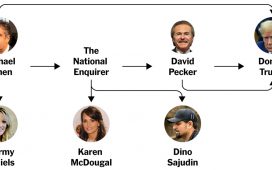Gilbert eats breakfast at the Lazarus House Ministries morning soup kitchen on August 16, 2019 in Lawrence, Massachusetts.
Spencer Platt | Getty Images
A strong economy tends to boost individual giving to charity. While economic growth has been strong over the last three years, giving by individuals is down since 2017, when the tax law changed, doubling the standard deduction and keeping many people from itemizing.
According to Giving USA, individual giving fell by 1% in 2018 compared with 2017.
That change had put a gloomy forecast on individual giving, but the picture may not be as bleak as originally expected.
The non-partisan U.S. Congress Joint Committee on Taxation predicts that individual giving to causes outside of education and health will hit $33 billion in 2019 and rise to $37 billion in 2022, that’s up from $30 billion and $34 billion, respectively.
Fidelity Charitable, which manages two hundred thousand donor accounts, with a median value of $17,000 each, has seen giving increase through its donor-advised funds. It attributes the brighter prospects to strong returns in the stock market. Donor-advised funds allow contributors to bundle gifts that can be written off in year one, but spread out over multiple years.
“If you have a high income year what you might want to do is bunch a lot of your giving for the next, 2, 3, 4 years into one year and sustain your giving,” said Amy Pirozzolo, Fidelity Charitable Head of Donor Engagement and Insights.
A study by The Chronicle for Philanthropy found higher education and the biggest, most well-known organizations have actually seen individual contributions increase over eight percent. But smaller, local charities are concerned about what they see as a giving gap.
Unexpected drop
Britepaths, a community based non-profit based in Fairfax, Virginia has seen an uncharacteristic drop in individual donations and is facing an $80,000 shortfall this year. That could mean some of the services it delivers to 7,000 low income families could be disrupted.
“We are seeing a fewer number of smaller and mid-level donations, under $500. I think that the tax change has priced out any benefit to our contributors who are unable to give beyond this level,” says Lisa Whetzel, Executive Director of Britepaths.
United Way has seen individual giving decline in six of the last seven quarters, even as economic growth has exceeded two percent. It blames the tax law change for effectively taxing middle income givers on their donations and creating a giving gap between middle class and rich donors.
“It’s not about a small number of wealthy people picking and choosing their favorite charities to give to, it’s really about Americans across the country from all income and different types of backgrounds all giving back to their communities and helping people in need, that’s what charity is about in America,” said Steve Taylor, senior vice president and counsel for United Way.
United Way wants Congress to make charitable donations tax deductible for all. But how big of a role tax reform is playing in giving is still under scrutiny.
Fidelity’s Pirozzolo points out that stock market performance also plays a role in giving. “We’re only in the second year of analyzing charitable giving after tax reform and I think it’s still going to take a couple of years to understand the impact, given changes in the markets and other dynamics on charitable giving,” said Pirozzolo.






